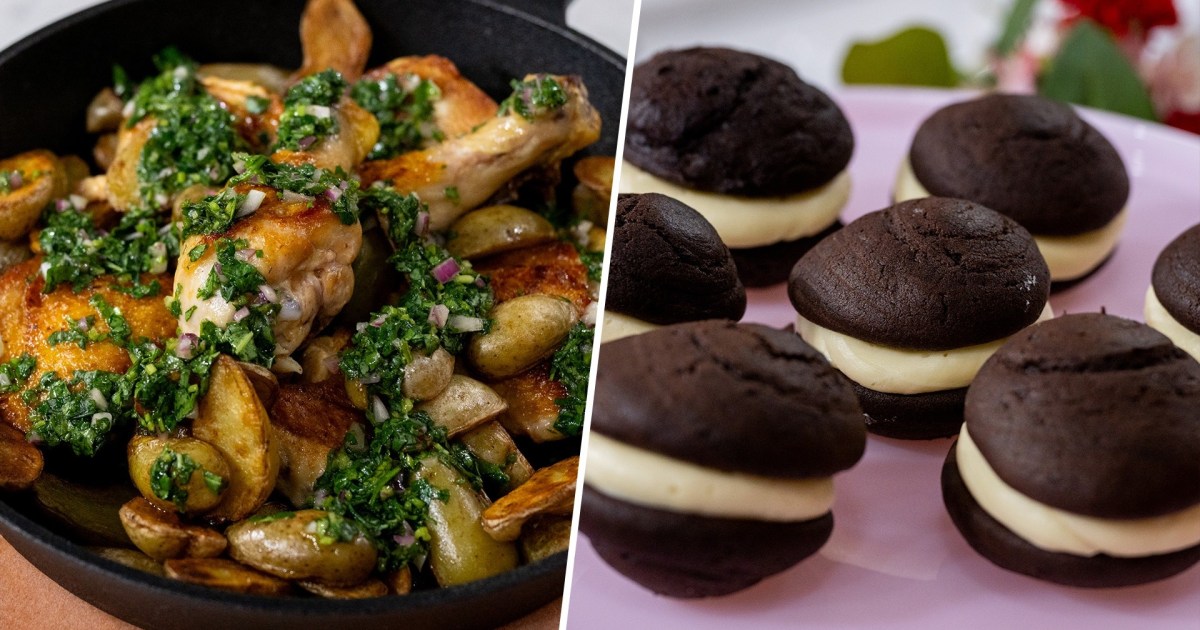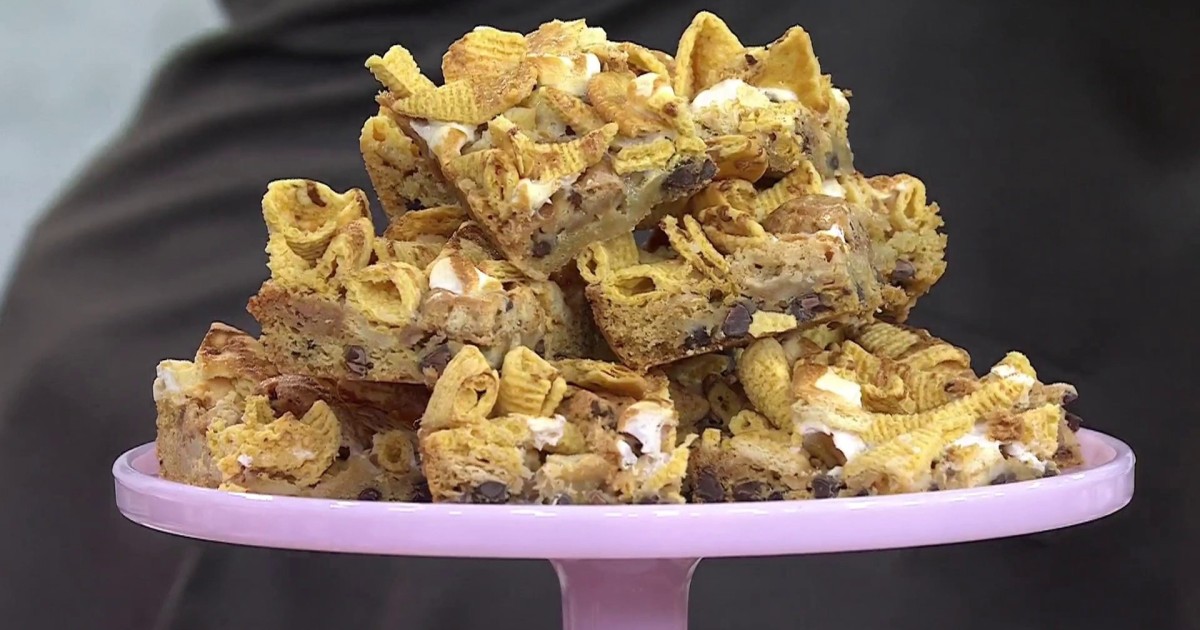Active time:5 mins
Total time:1 hour
Servings:4
“The first time I heard Jiangnan referred to as yu mi zhi xiang — the ‘Land of Fish and Rice’ — was as my family and I sped along a small road by Taihu, ‘Lake Tai,’ with a beautiful golden field of rice swaying gently with the breeze on one side,” writes Betty Liu in her gorgeous cookbook, “My Shanghai: Recipes and Stories From a City on the Water.”
Among the many recipes in the book, almost half feature rice in some form. There are pumpkin rice cakes with red bean paste, rice-encrusted pork ribs steamed in lotus leaves, sticky rice rolls filled with black sesame seeds, and many others. But one of the simplest rice recipes is for zhōu or xī fàn — often called by its Anglicized name, congee.
A simple rice porridge, in its most basic iteration, it’s a combination of rice and water in a ratio of about 1 part rice and anywhere from 6 to 12 parts water. The rice is boiled and simmered until the grains release all of their starch, thickening the water as they fall apart.
Known as juk or jook in Korea, bubur in Indonesia, lugaw in the Philippines, teochew in Singapore and dozens of other names around the world, there are also an endless variety of ways to make it. “You can make it with plain water or any kind of stock … you can vary its flavor with spices, dried roots, other grains, vegetables,” Liu tells me by phone from Boston, where she’s completing a surgical residency. Congee can be eaten plain, but it’s almost always topped with a few savory tidbits before serving.
Her congee recipe is meant to be a base that home cooks can play around with, adding or subtracting liquid to achieve their ideal texture, augmenting with other grains or vegetables for flavor, and finally topping with a variety of proteins and pickled, preserved or fresh vegetables.
In her book, Liu suggests topping your congee with pickled vegetables, a thousand-year egg, salted duck egg or chile-fermented tofu. But the possibilities are unlimited. “When I was a kid, we would each have our bowl of congee, and then a little dish of fermented bean curd. We’d take a spoonful of congee and then use our chopsticks to pick off some of the fermented bean curd,” Liu says. Today, she loves it with a drizzle of soy sauce and pickled mustard greens or kimchi.
“But you can use whatever you like or have on hand. Leftover duck or leftover Thanksgiving turkey are always good in cooler months,” Liu says, also noting that you could rehydrate dried mushrooms, use that liquid to cook the congee, and saute the mushrooms to serve on top.
For a springtime congee, she suggests sauteed or pickled green garlic or ramps — blitzed into a pesto or blistered in a hot pan — fresh peas, herbs and a squeeze of lemon juice.
In the summer, corn is ideal on congee, either simply steamed kernels or a puree of fresh corn, swirled into each bowl. Quartered cherry tomatoes and hard-boiled eggs? Fried eggplant and zucchini? Tiny, just-cooked shrimp? Yes, yes and yes.
“Growing up, congee was never served the same way,” Liu says. “One message I want to get across is that I think some people think Chinese food is intimidating. But like any home cooking, there are no real rules with congee. It’s your kitchen, it’s your rules!”
- Instead of rice >> try this with another grain, such as farro or buckwheat.
- To make your congee more flavorful, in place of water >> use any kind of stock or broth.
To make this recipe faster, plan ahead: Rinse the rice briefly in cool water, drain it and then freeze in a resealable bag. Once frozen, the water coating the grains will help them break down more quickly. Boil the frozen rice for just 20 minutes, instead of the full hour, to achieve the same porridge-like texture.
Storage: Leftover congee may be refrigerated for up to 1 week.
Where to find: Dried lily bulbs, dried mung beans, pickled mustard greens, thousand-year eggs and chile-fermented tofu can be found at Asian markets or online.
Want to save this recipe? Click the bookmark icon below the serving size at the top of this page, then go to My Reading List in your washingtonpost.com user profile.
Scale this recipe and get a printer-friendly, desktop version here.
- 8 cups water, chicken stock, mushroom stock or vegetable stock, plus more as needed
- 3/4 cup short- or medium-grain white rice
For the optional additions
- 1 dried lily bulb
- 2 tablespoons dried mung beans, soaked in water overnight
For the suggested optional toppings
- Pickled mustard greens or other pickles
- Thousand-year egg or hard-boiled egg
- Chile-fermented or other tofu
- Soy sauce
- Scallions
In a large pot over high heat, bring the water or stock to a boil. Add the rice, as well as either or both of the optional additions, and bring back to a boil.
Reduce the heat to low, cover and simmer, stirring periodically to prevent the rice from sticking, until the rice grains have “blossomed,” or opened up and started to split, and the congee has a thick, porridge-like consistency, about 45 minutes. Add more broth or water, if you want a looser congee. If you want it thicker, uncover and cook longer.
Serve with your choice of toppings, stirred into the congee to flavor it, or added on top, to be eaten between spoonfuls of porridge.
Per serving (1 1/2 cups congee; excluding toppings)
Calories: 128; Total Fat: 0 g; Saturated Fat: 0 g; Cholesterol: 0 mg; Sodium: 2 mg; Carbohydrates: 28 g; Dietary Fiber: 1 g; Sugars: 0 g; Protein: 2 g.
This analysis is an estimate based on available ingredients and this preparation. It should not substitute for a dietitian’s or nutritionist’s advice.
Adapted from “My Shanghai” by Betty Liu (Harper Design, 2021).
Tested by G. Daniela Galarza; email questions to [email protected].
Scale this recipe and get a printer-friendly, desktop version here.
Browse our Recipe Finder for more than 9,700 Post-tested recipes.
Did you make this recipe? Take a photo and tag us on Instagram with #eatvoraciously.
Catch up on this week’s Eat Voraciously recipes:
Monday: Polenta With Balsamic Scallion Greens
Tuesday: Herb-Marinated Tofu Feta








